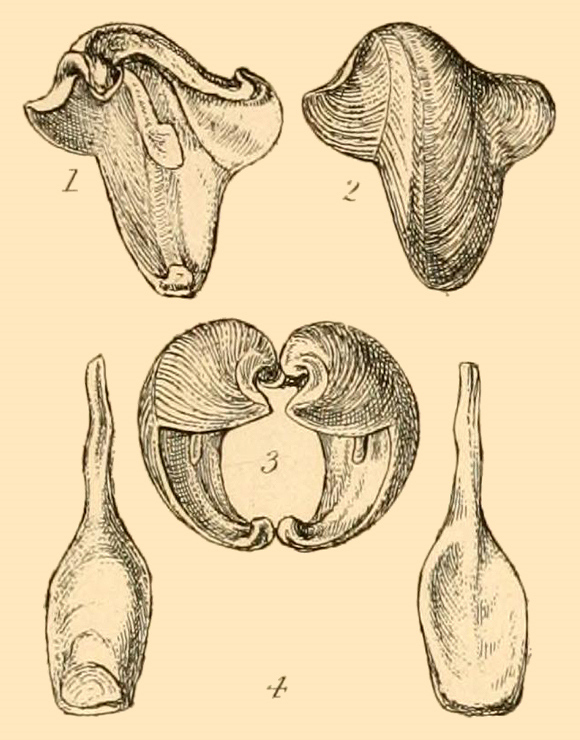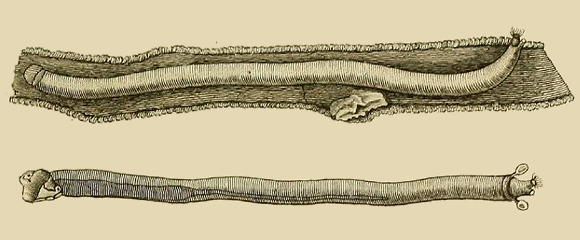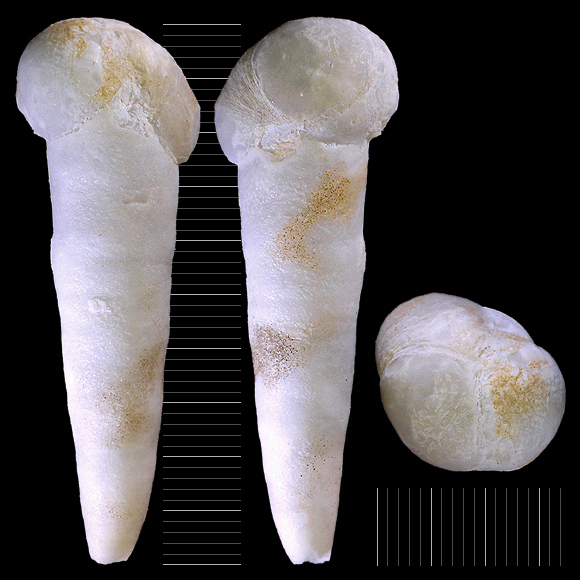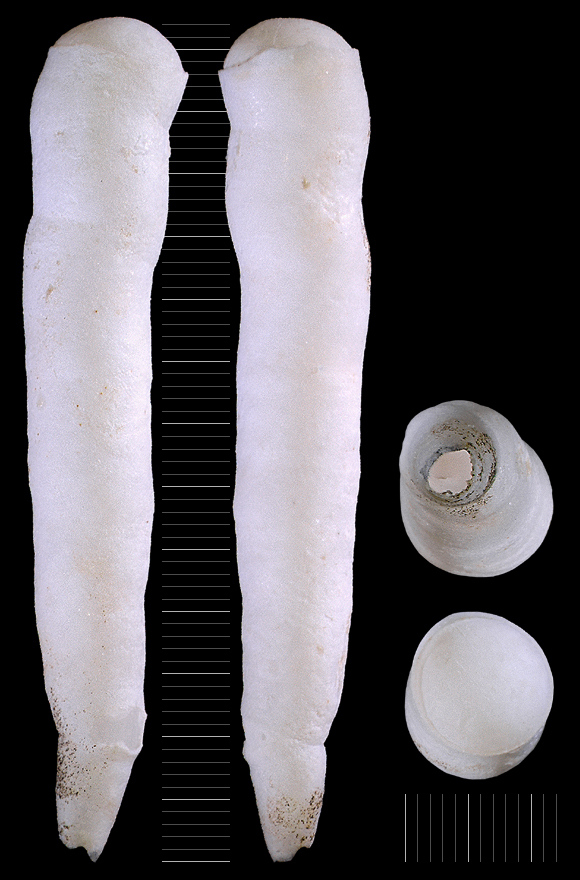
Original taxon: Teredo norvagica. Synonyms: bruguierii, deshayesi, divaricata, fatalis, nigra…
Above: the species in Forbes & Hanley: A history of British Mollusca and their shells vol. IV, London 1853, plate I.
« The auricle, which is never peculiarly large, rarely exceeding the size of the front triangle, is always situated high up on the posterior side, its base being nearly on the same level with that of the triangular area; the lower posterior margin is consequently longer in proportion than in the two succeeding species. It is ordinarily rather narrow, is more or less ear-shaped, and although usually a little below the level of the beaks, will occasionally be found rising slightly above them; but even in that case no risk is incurred of confounding it with megotara, as the auricle in that species descends likewise far below the base of the triangular area. No abrupt lowering of surface indicates, as in navalis, its anterior commencement; a slight concavity precedes its terminal reflexion. […] The front triangular area is concentrically traversed by elevated and rather closely-set striae, which diverge from the anterior dorsal edge; to these succeed another series of the most crowded and exquisitely engraved lines imaginable, which under a powerful glass exhibit a distinct microscopic subgranular decussation; these latter, uninterrupted by either linear callosity or impressed striae, unite almost at right angles with the former, and occupy a more or less narrow triangular strip of surface, extending from the beaks to the ventral tubercle. Posteriorly these fine lines diverge, and form concentric and rather distant arches, with occasionally intermediate striulae, which very quickly become obsolete, leaving the hinder side comparatively smooth and destitute of any decided sculpture; there is, nevertheless, a not unfrequent tendency in the surface of the auricle and immediately adjacent parts to rise up in confluent verrucose granules. » – Forbes & Hanley: op. cit. vol. I, p.67-69.

« Pallets testaceous, flask-shaped, not forked at the base. »
Above: the species in Bruguière, according to Delle Chiaje, who mentions it in his Memorie sulla storia e notomia degli animali senza vertebre del regno di Napoli, Napoli 1830, p.32: « T. Bruguierii – Palmulis simplicibus ellipticis spathulatisque. Bruguiere, Enc. meth. tab. CLXVII, fig. 1,2. »

